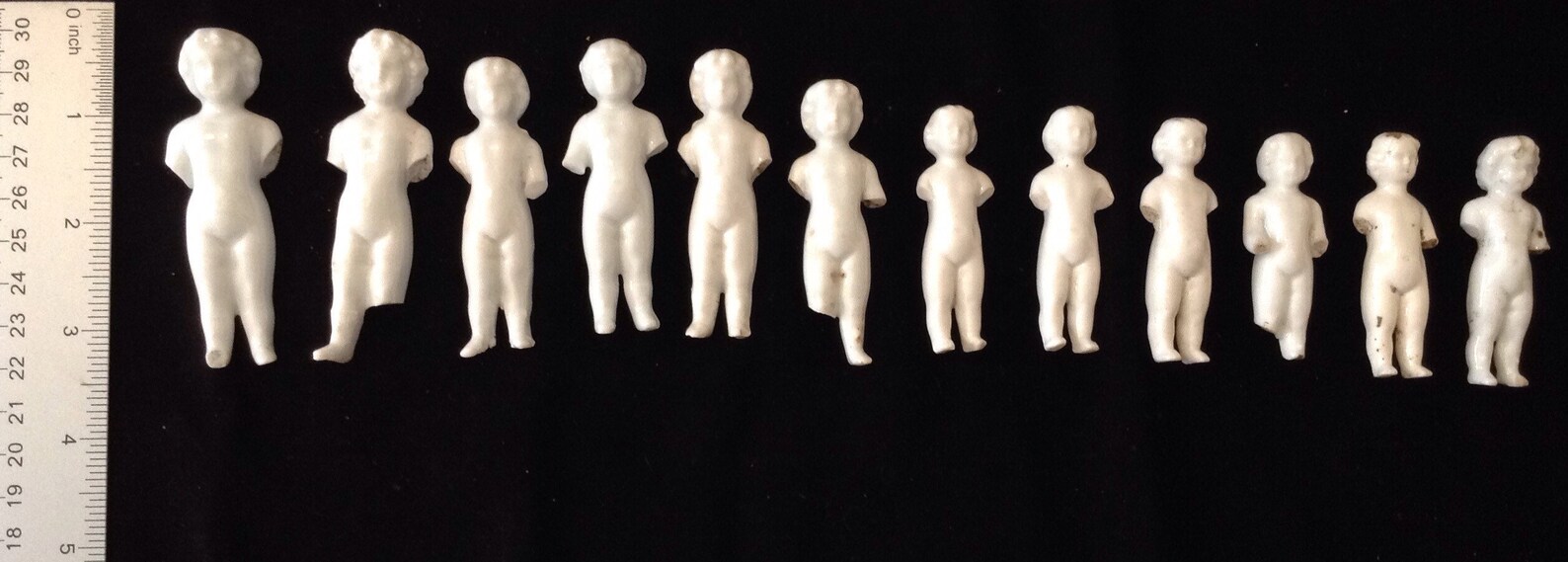Table Of Content
- King Cake
- Creepy porcelain dolls named Frozen Charlotte were sold in tiny caskets and baked into cakes
- The chilling story of ‘Frozen Charlotte’ and the corpse-like dolls that bear her name
- Decorating Ideas for Frozen Charlotte Dolls
- History
- American Girl store admissions
- Frozen Charlotte Dolls Were Sold In Tiny Caskets

The condition of a Frozen Charlotte doll plays a crucial role in determining its value. Collectors prefer dolls that are in excellent condition with minimal damage, such as chips, cracks, or paint loss. Or course, given that they are largely excavated finds, many are just torsos, or heads, or even just limbs. If you’re buying one or two, or perhaps just a head, the price is achievable. But if you want to create a collection, be prepared to spend $100 at a minimum.
King Cake
Adorn your Christmas tree with these miniature treasures or use them in your festive table settings to add a touch of nostalgic charm.
Creepy porcelain dolls named Frozen Charlotte were sold in tiny caskets and baked into cakes
Victorian women might have decorated their shelves with delicately painted Frozen Charlotte dolls. But Americans renamed the dolls Frozen Charlotte and gave them a creepy backstory. A documented history of ownership, or provenance, can significantly impact a doll’s value.
The chilling story of ‘Frozen Charlotte’ and the corpse-like dolls that bear her name
They are formed as one solid piece and have no joints, thus giving rise to the name “Frozen”. Some have dark-painted hair and red lips but they are otherwise as white as snow. So, while it makes a compelling and delightfully morbid origin story, none of the children who actually played with these dolls knew of a connection between their favorite toy and a foolish young woman’s frostbitten corpse. And even though they’ve lost a bit of their historical creepiness, don’t let that stop you from being excited if you find a porcelain doll on the shore. The poem was a hit, as it touched on the dangers of vanity and not listening to your parents.
Other items decomposed, like wooden toys and stuffed animals, but items made with glass, metal, and now plastic still survive and are found on the beach. Waist is measured at natural point (ask girl to bend to one side to find natural crease of her waist; measure around this point). Join us to celebrate the return of this beloved American Girl tradition. You and your girl will enjoy a full teatime experience, including dainty tea sandwiches and assorted sweet treats with a pot of tea, plus each child will enjoy a craft activity at the table. The Kingman [Kansas] Citizen tells of a novel plan adopted by Judge Peters to keep from being bored by attorneys.
Unusual designs, molds , or themes can increase a doll’s desirability and value. Some collectors seek specific variations or limited edition releases. Assuming the condition is the same, larger dolls are more expensive to buy than small ones.
History
9 Investigates: Investigators take new look at 1981 murder of 5-year-old Charlotte girl - WSOC Charlotte
9 Investigates: Investigators take new look at 1981 murder of 5-year-old Charlotte girl.
Posted: Fri, 08 May 2015 07:00:00 GMT [source]
I cannot believe there is authentic proof in the mind of the manufacturers of old dolls or of the children playing with them for so dubbing them. Dolls with blue eyes became popular in Queen Victoria’s reign but we cannot call them ‘Queen Victoria’s’ nor can we call the wooden dolls she played with circa 1820, Victoria dolls. We all see dolls that remind us of some prominent or historical character but why should any one of us have the right to so describe the type.
Their popularity soared in Britain and America, where they were baked into cake as a nice (or not so nice, depending on your tolerance for creepy little porcelain girls) surprise for kids. The song was itself based on a poem by American writer Seba Smith, who first published the poem in a Maine newspaper in 1843. His poem was in turn inspired by an account published in a New York newspaper in 1840 detailing just such an incident. The doll's coloration is sometimes believed to be a reflection of the young lady's frosty demise. All mentions of these dolls from the time period call them “penny dolls,” not “Frozen Charlottes.” So when did the name we use today actually become connected to these little porcelain dolls?
Additional charges and exclusions may apply for rush shipping, shipping outside of the US or Canada, and shipping large items. Offer not valid at Indigo, or Chapters™ retail locations or websites. No refunds or adjustments on previous purchases or orders in progress that have not yet shipped. These little dolls can be anywhere from less than an inch up to 18 inches tall, and now turn up on beaches as a highly-sought-after find.
The eerie tale of a woman perishing on a long sleigh ride inspired Maine poet Seba Smith to write a poem called "A Corpse Going to a Ball." One time highly sought after by young girls to play with in the bath or bake into a cake, these antiques are now sought after by collectors today. It’s commonly accepted that these dolls were didactic tools, physical representations of the consequences of parental disobedience. It’s widely believed that Victorian children were well-aware of the origin story of these dolls and played with them nonetheless. After all, many aspects of Victorian culture are openly macabre and death-obsessed, so this grisly historical narrative isn’t entirely outlandish. We all love those stories but here is where we must use discretion and whatever knowledge our study has developed.
Attach them to necklaces, brooches, or keychains for wearable vintage elegance. During the war, many of the doll factories were either abandoned or destroyed, burying the Frozen Charlotte inventory in the dirt. These dolls are now hunted for and dug up by excavators for the many collectors who covet them. Ultimately, Frozen Charlotte dolls became eerie reminders for children to obey their parents. Like marbles, dice, and other toys, when they wore out, broke, or were no longer wanted they ended up bring tossed in the trash. In past centuries, many towns and cities dumped their municipal trash over a cliff, in a river, or directly on a beach.
When they arrived, her more-bundled-up beau found her frozen to death in the sleigh. The story says Charlie died of a broken heart soon afterward, and they were buried together in a single tomb. These tiny, pale, porcelain nightmares were pottery dolls manufactured in Germany in 1850, and intended for children to play with during bath time.
Such dolls were sold undressed (the clothes are almost always homemade) and were used in dollhouses since they wre jointed and were able to sit, unlike the Frozen Charlottes. This new doll was different, though, because whereas most of the china-head dolls represented ladies, the new doll was designed as a baby or small child. It was generally chubby in form, with molded stiff limbs and bare feet. The arms were bent at the elbows, but the legs were straight and separate. It usually had short black molded hair with brush marks framing the face.

The name “Frozen Charlotte” for these small porcelain dolls has its origins in an American folk ballad, based on the poem “A Corpse Going to a Ball” by Seba Smith. The ballad tells the story of a young woman named Charlotte who was traveling to a New Year’s ball in an open sleigh during winter with her beau Charles. Despite the frigid weather, she refused to cover herself with a blanket, fearing it would hide her beautiful gown.
It was likely coined by doll collectors as late as the mid-1940s, when mentions of “Frozen Charlotte dolls” in ads, newspapers, books, and magazines skyrocketed, and soon became the common way to refer to these Victorian playthings. Despite what we moderns believe, nor did the legend of frozen Charlotte serve as inspiration for the creation of Frozen Charlotte Russe, a favorite 19th-century dessert. The trifle-like treat, popular into the 20th century, is merely a cold (or icebox) version of Charlotte Russe, which is based on the still older and simpler charlotte, a type of molded cake known since the 18th century. The increasing prevalence of iceboxes in homes and restaurants in the United States in the last half of the 19th century drove the creation of many cold desserts, which could now be served all year long.

No comments:
Post a Comment